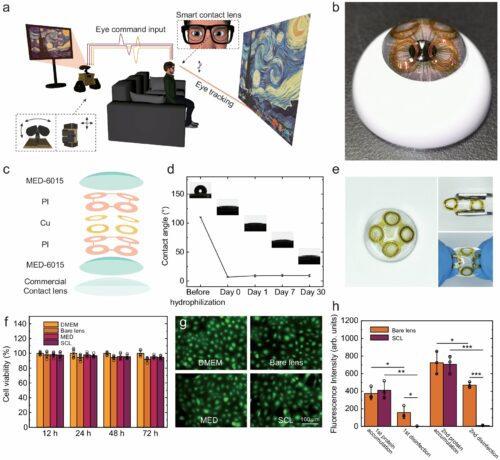Researchers in Nanjing, China, have made smart contact lenses that track eyes using radio tags, useful in healthcare and augmented reality.

Smart contact lenses, a relatively new technology, monitor various health factors and facilitate human-machine interaction (HMI) by tracking eye movements through techniques such as pupil centre corneal reflection and electrooculography (EOG). However, these methods often lack precision and are vulnerable to interference. Moreover, EOG, which involves using skin electrodes to gather data, has potentially been found to harm the skin.
Scientists in Nanjing, China, have created eye-tracking smart contact lenses with radio frequency tags suitable for use in healthcare and augmented reality (AR) applications. These lenses are biocompatible and invisible to the wearer, functioning without batteries or traditional silicon chips.
Human-machine interaction
Human-machine interaction (HMI) is vital in technology’s advancement across gaming, healthcare, AR, and robotics. Eye-tracking via smart contact lenses improves HMI by monitoring health, aiding robot communication, and enhancing AR. Yet, challenges prompt the exploration of frequency-encoding for better accuracy.
Frequency-encoding
Researchers have developed a smart contact lens that uses radio frequency (RF) signals encoded by embedded RFID chips to track eye movements. These wireless, battery-free tags emit unique frequencies that change as the eye moves, allowing a system to precisely monitor the direction and extent of eye movements in real time. This frequency encoding strategy makes the smart contact lenses compact, lightweight, and biocompatible, eliminating the need for conventional silicon chips or batteries.
Making and testing the smart contact lens
Researchers embedded four RF tags in a silicone elastomer to create biocompatible smart contact lenses. A nearby portable reader recorded signals for human-machine interaction. The lenses detected gaze directions and eye closures and had high angular accuracy for diverse applications like gaming and browsing. In vivo tests on rabbits confirmed safety and functionality, confirming that they resembled commercial lenses.
Potential applications
The introduction of the Apple Vision Pro has sparked widespread interest among researchers and the public, driving exploration into the potential applications of eye-based computer-human interaction. This exploration promises to foster technological advancement and enhance people’s quality of life through innovative solutions.
Reference: Hengtian Zhu et al, Frequency-encoded eye tracking smart contact lens for human–machine interaction, Nature Communications (2024). DOI: 10.1038/s41467-024-47851-y






